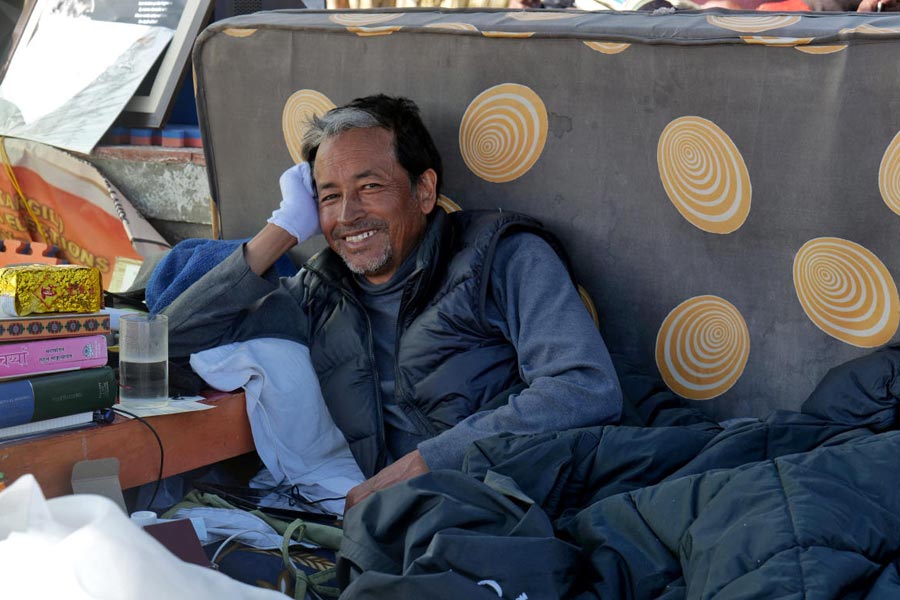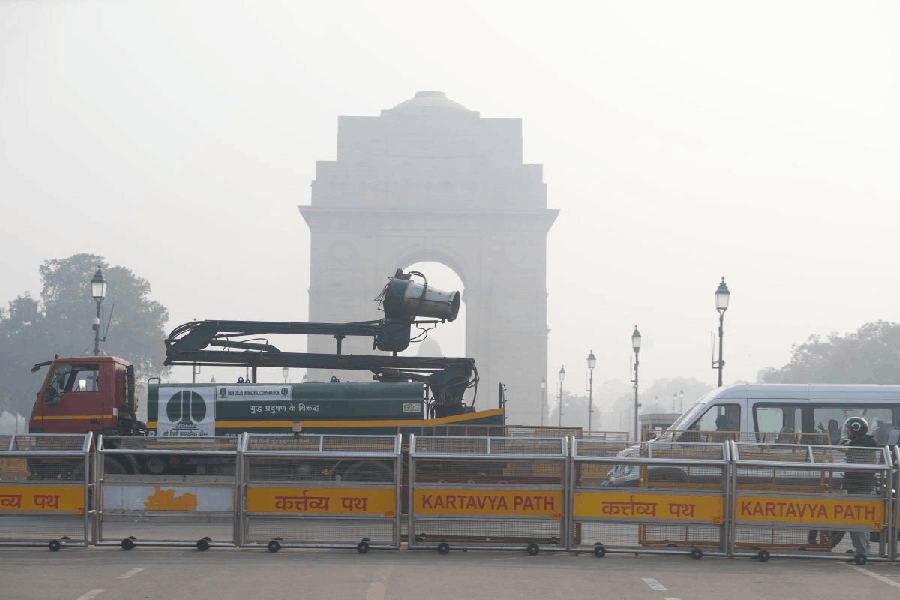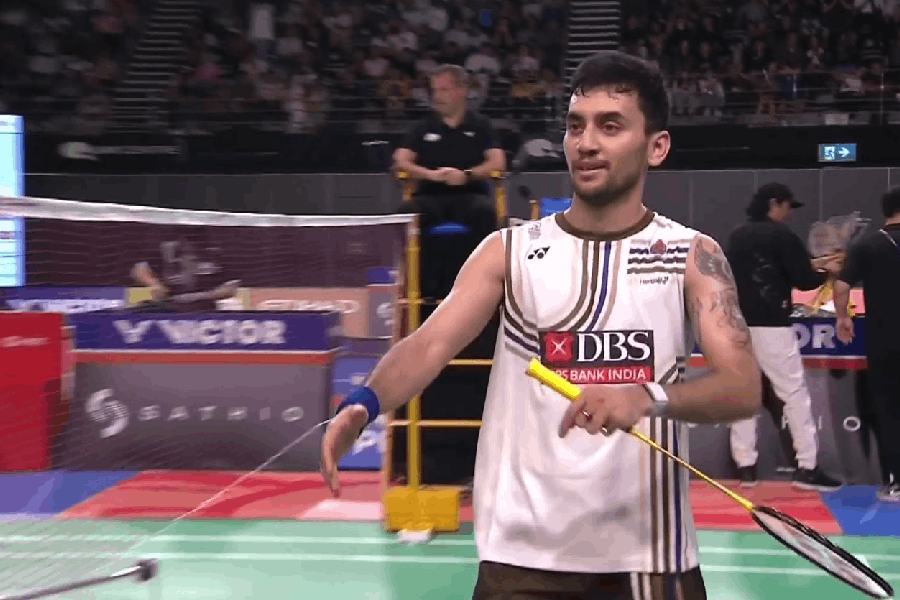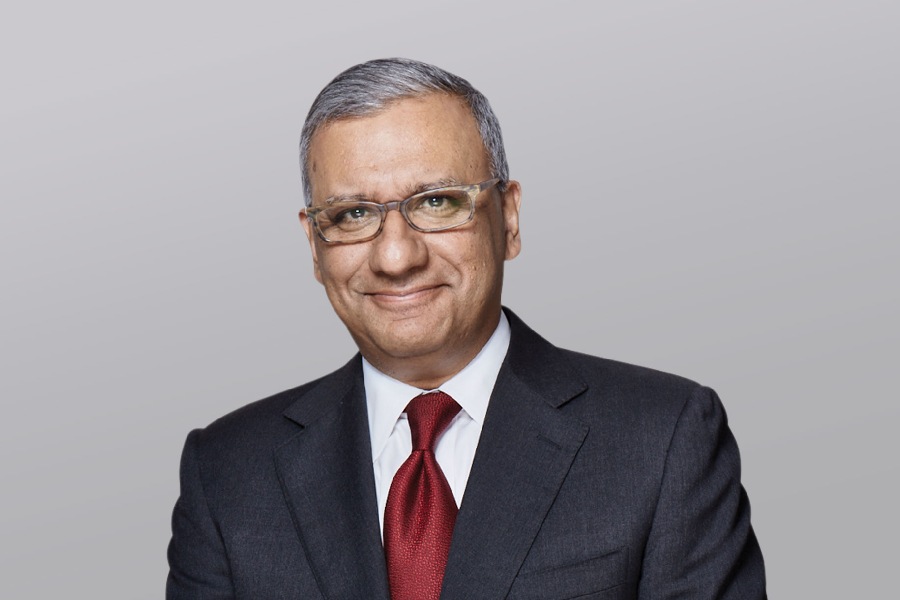 |
| Soldiers get a briefing before they take position at a five-star facility where international media are housed in Cairo. Picture by Sankarshan Thakur |
President Hosni Mubarak attempted to throw off the grinding siege on him late tonight, dismissing the top leadership of the ruling National Democratic Party (NDP) and replacing son Gamal with Hossam Badrawi, a known reformist, as general secretary.
The manoeuvre was immediately and summarily rejected by protagonists of the Tahrir Square uprising as cosmetic concessions dangled by a panicked dictatorship. Hosni Mubarak does not want to budge from presidency, at least until September, and the protesters would have nothing short of that. “Mubarak must Go!” they continued to chant, “Go, Go, Mubarak!”
Indeed, even as Egyptian state television aired news of Gamal Mubarak’s “resignation” and the shakeup in the powerful NDP secretariat, many in the frontlines of the revolt remained sceptical. “These could just be rumours,” said Mozn Hassan, a regime-change activist. “This is a sure sign that Mubarak is increasingly worried, but this could also be a trick to confuse us and to scatter the revolution. We need to be vigilant and persistent.”
The Tahrir Square gathering reacted almost to cue. A little despondent and thin through the afternoon after the uneventful passage of “Departure Day”, it seemed to re-energise itself following the announcement on state television. Truth or trickery, the word from the President was “proof” that he was feeling the heat close in on him. The crowd appeared suddenly sensed of victory round the corner; Mubarak, in short, was not stirring yet, but he was shaken. “We cannot go back from here,” said one protester in response to the army central command’s appeal earlier in the day to call off the sit-in. “Now is the time to press on, if there is a let-up now, Mubarak will bounce back.”
It had begun to rain, and a dense mist had closed in, but the protest burgeoned as news of the changes spread. Tahrir Square had thinned out through the day, but the evening brought the apparatchiks of change running back. One group unfolded a huge vinyl poster of Hosni Mubarak with a Hitlerian moustache and slash of hair, and set it alight. “He goes, we stay,” they shouted, “We stay till he goes.”
Too little too late, Ahmed Seif Hamad, lawyer and leader of the Front to Defend Protesters, seemed to suggest of the President’s move. The widely despised Gamal Mubarak isn’t really part of the fluid equations now, he argued; he has decamped to London with family and 97 suitcases, many of them loaded with cash. Hosni Mubarak remains in saddle as Egypt’s potentate, still in control of key levers of power. “Nothing but Mubarak’s resignation as executive, his complete departure from control,” Hamad said, “Anything short of that is unacceptable.”
Former IAEA chief and emerging Opposition voice, Mohammed ElBaradei, who has been trying to cobble a viable political alternative behind the scenes, was clearly not impressed either. “This is a regime melting down,” he told television channels from his Giza home, “but people want a clean cut, a regime change, if you like. That is not happening, but the protest will press on till it does.”
Speaking on the phone to The Telegraph from the centre of Tahrir Square, Hani Anan, leader of the Kifaya Opposition movement, affirmed a resolve that’s common to the uprising.
“We will stay in the square till Mubarak goes. He is desperately clinging on, but he will have to go, that is the irrevocable logic of this revolt. What he has announced tonight is a sign of transition in progress, step by step. It will end when he steps down.”
But while he appeared to indicate he was willing to loosen his political hold, President Mubarak is also trying to dig in.
New spools of concertina fencing now lie moated around his humongous Heliopolis Palace north of the city, and military guard has been upgraded.
Should there be a run on his den in the endgame, he will make it ugly, he’s leaving nobody in doubt of that. Politically, he is clearly playing a who-blinks-first game with the widening ranks of opponents, engaging them through the proxy eyeballs of Vice-President Omar Suleiman and Prime Minister Ahmed Shafiq. Neither enjoys the authority to offer any decisive proposals to the protesters.
A delegation led by Abdel Rehman Youssef of the National Association for Change met Prime Minister Shafiq today and demanded that, at the very least, President Mubarak hand over all authority to Vice-President Suleiman and agree to play lame duck until September, when elections are scheduled. Youssef was bluntly turned down — the President isn’t stepping down or aside.
They were given a Gabbaresque line as they left: only one man can decide if Hosni Mubarak will quit, Hosni Mubarak himself.
 |
| Volunteers block a street to prevent weapons and infiltrators entering the Talaat Harb Square in downtown Cairo. (AP) |
And if Youssef came away even with a fleeting sense the government was slowly letting the opposition in, he was wrong. At least in the way the establishment saw it. Shortly after his interaction with Youssef’s delegation, Prime Minister Shafiq spoke publicly of “divisions in the opposition”.
He claimed the Tahrir Square vigil was “weakening” and that the government would ride through the crisis. “Big nations go through crises,” he said, gratuitously. “So will we, Egypt is a strong state, and the opposition is not only divided, it is also not working in the interests of a strong Egypt.”
Clearly, the efforts to engage the opposition, such as they are, amount to little more than playing for time. There is no question, at least yet, of any negotiation by the establishment on the central demand that Mubarak should give up power. And at Tahrir, there isn’t any question, at least yet, that they’ll settle for anything less. For the moment, they have to be happy with a stuffed Mubarak dummy strung by the neck on overhead powerlines.










